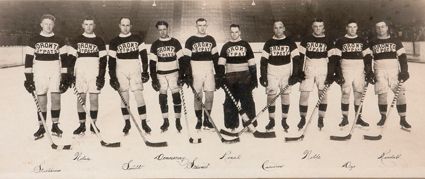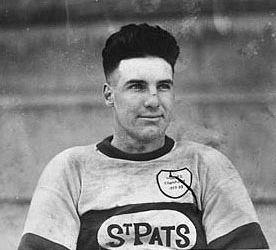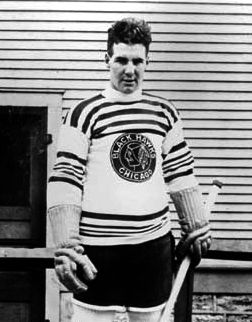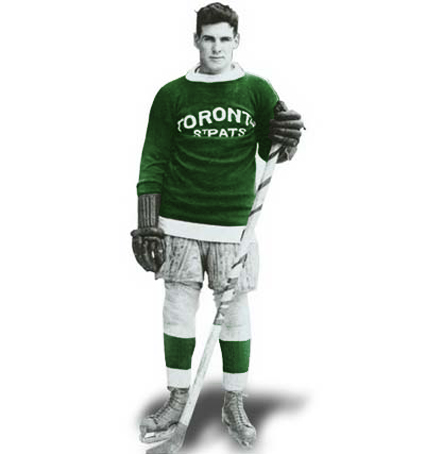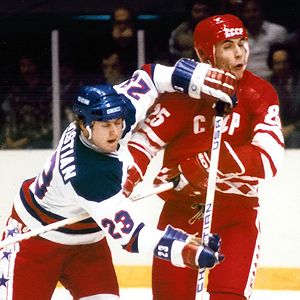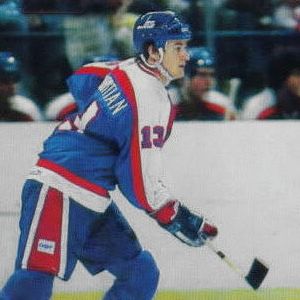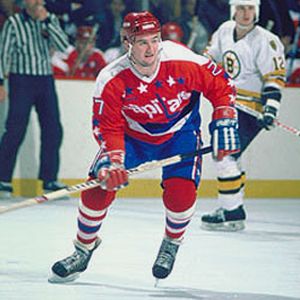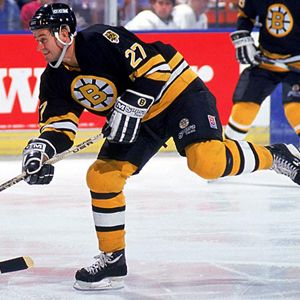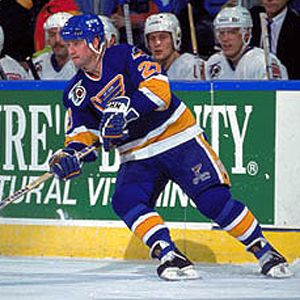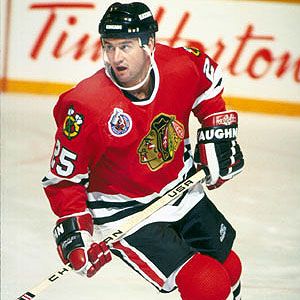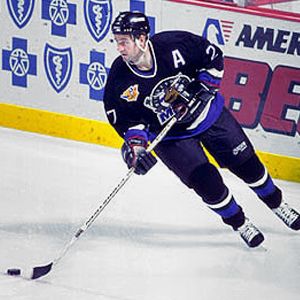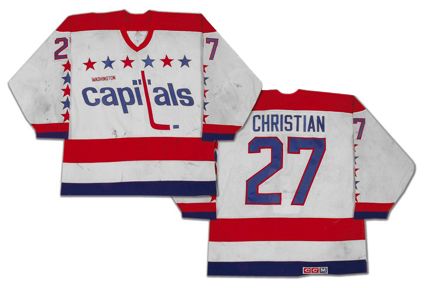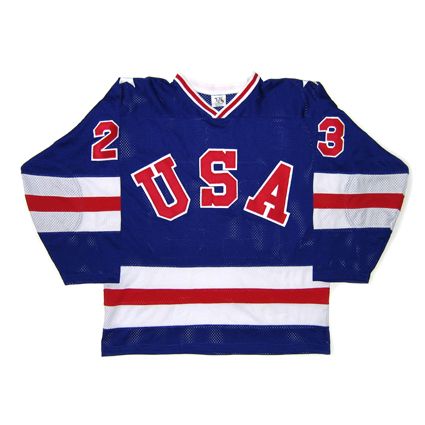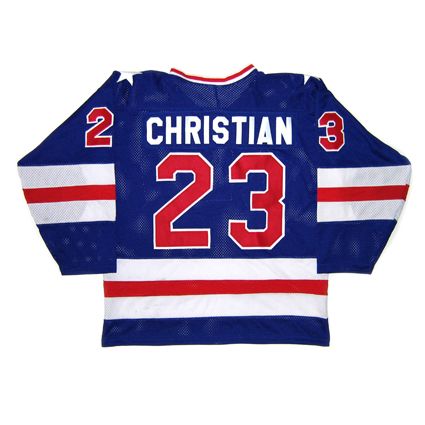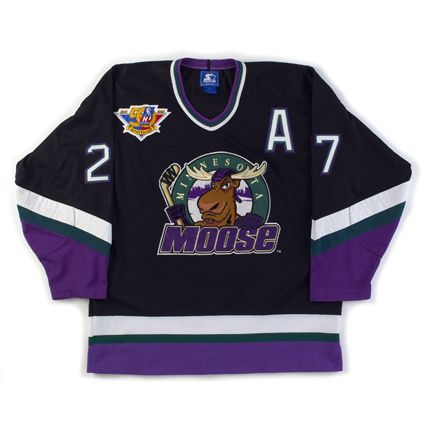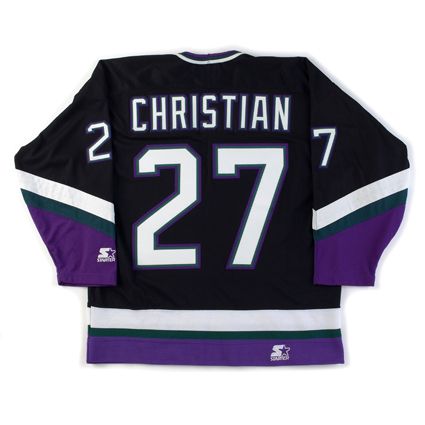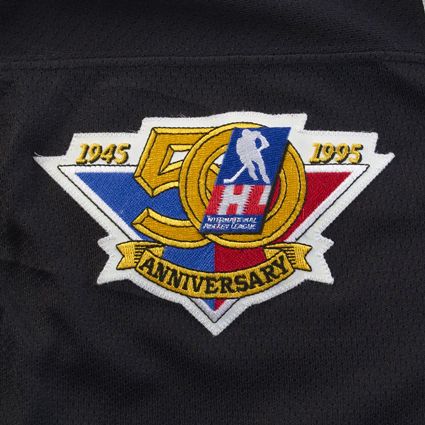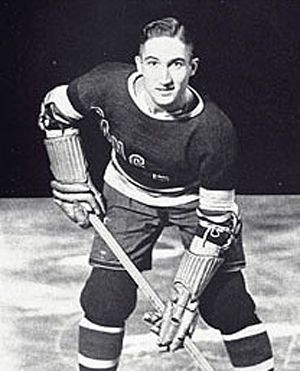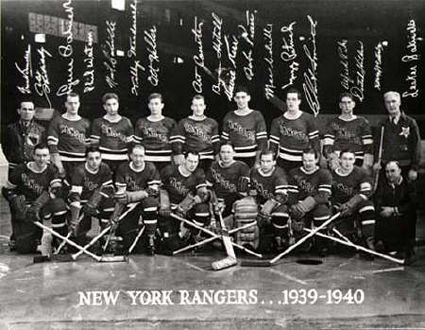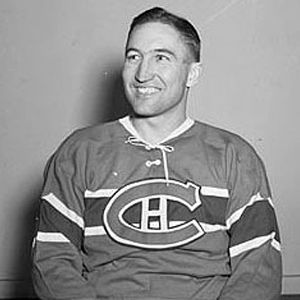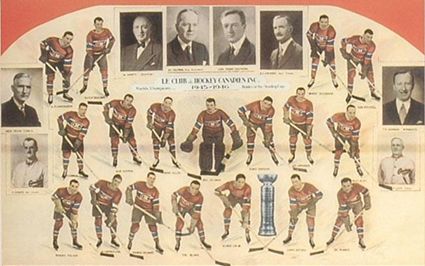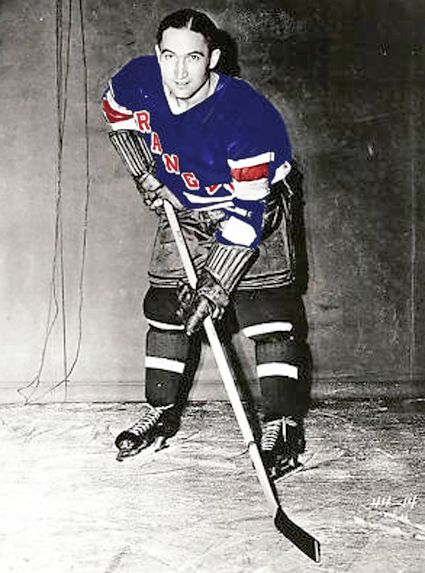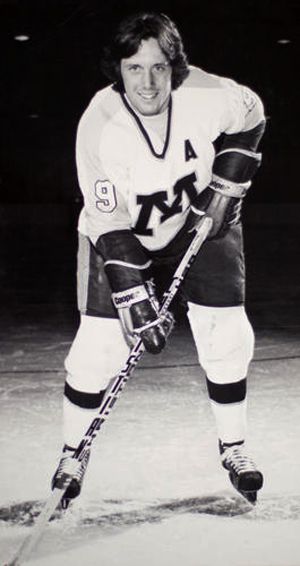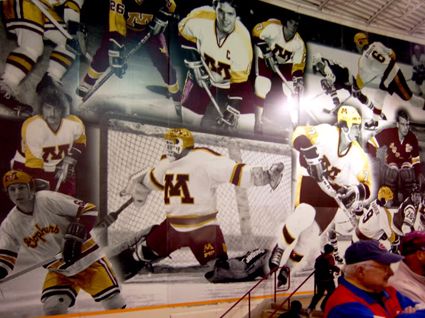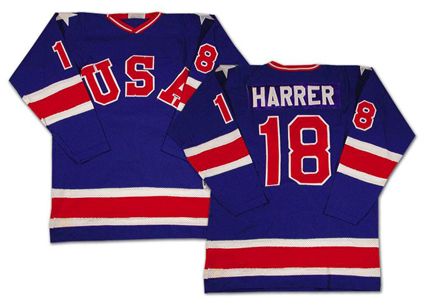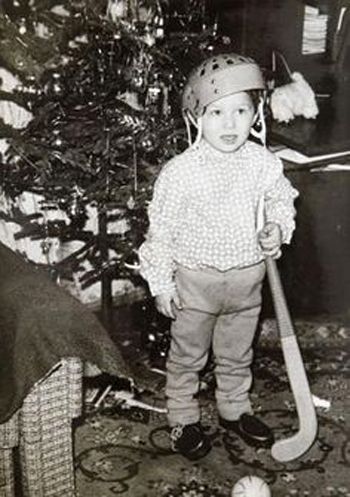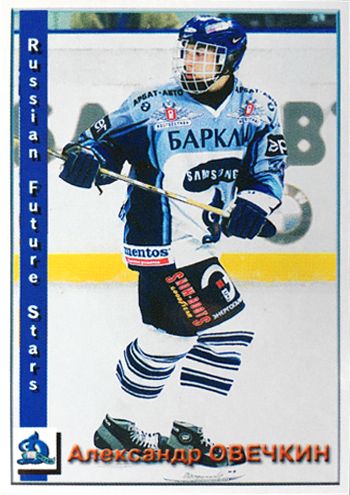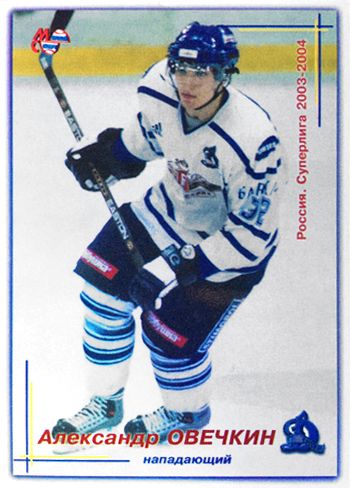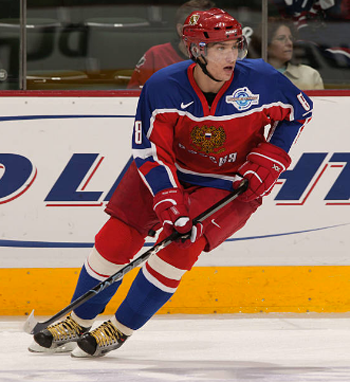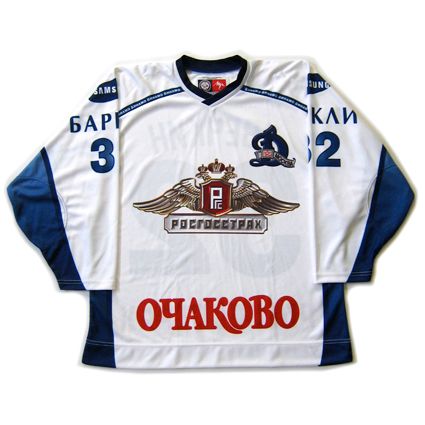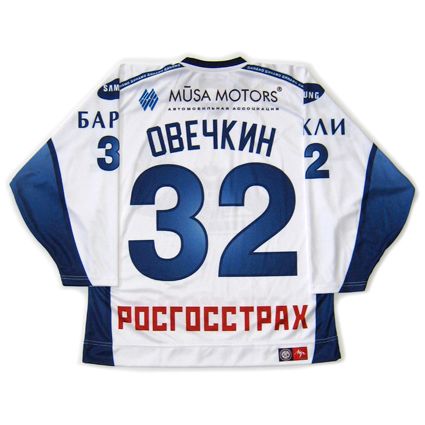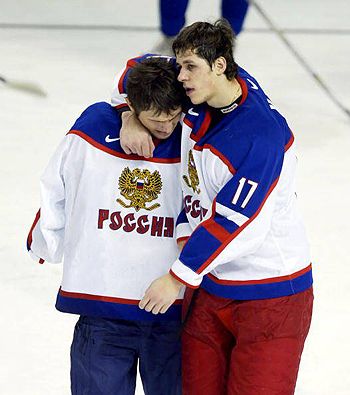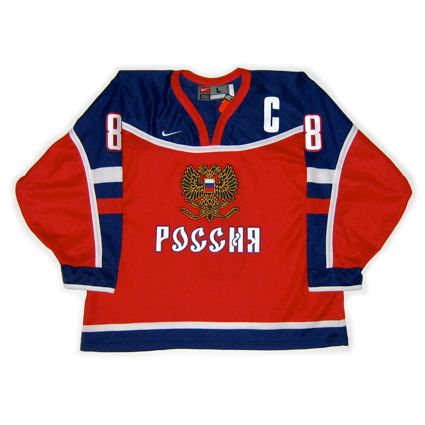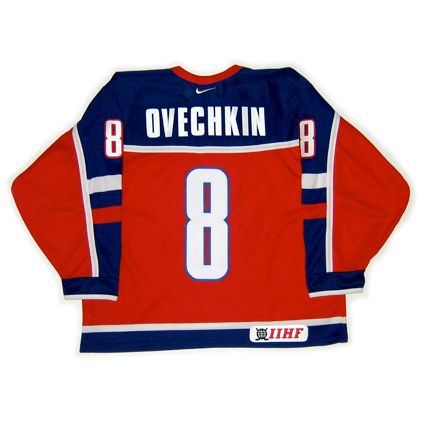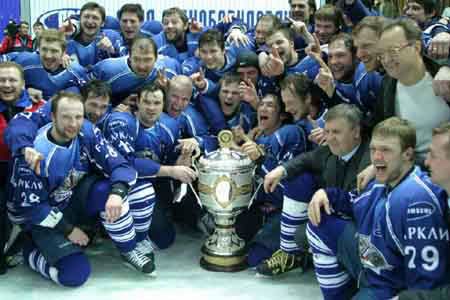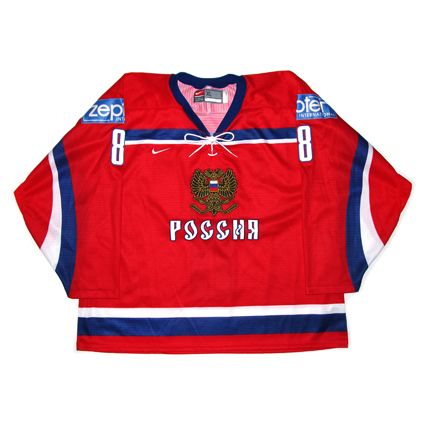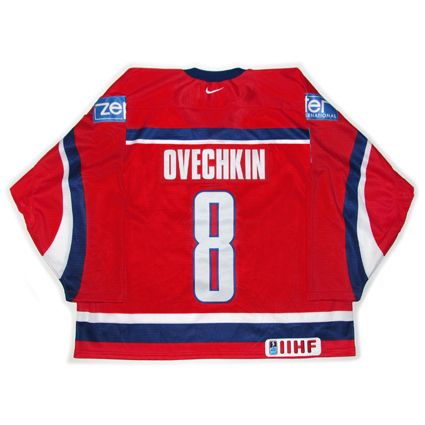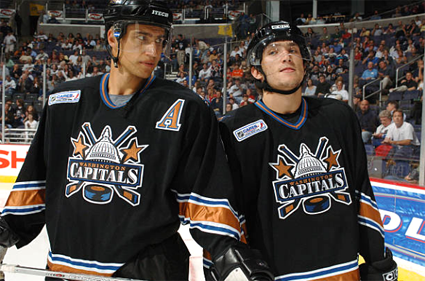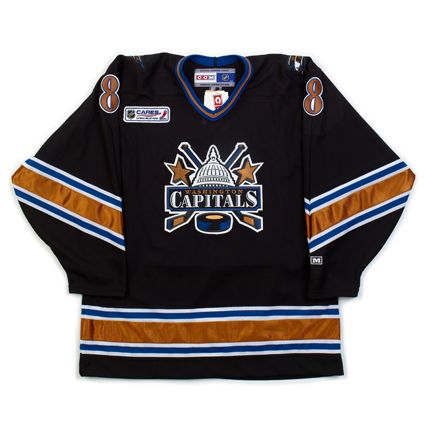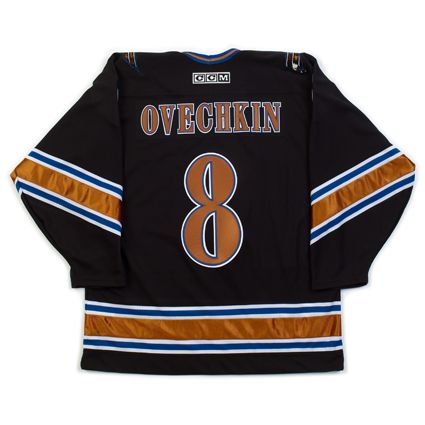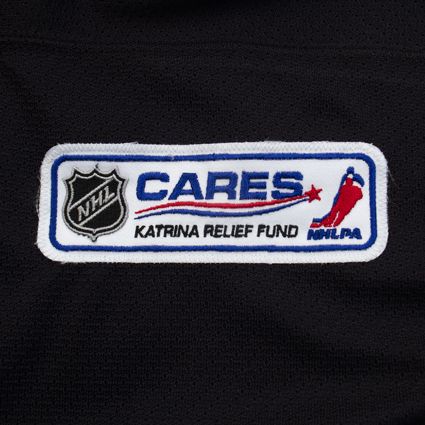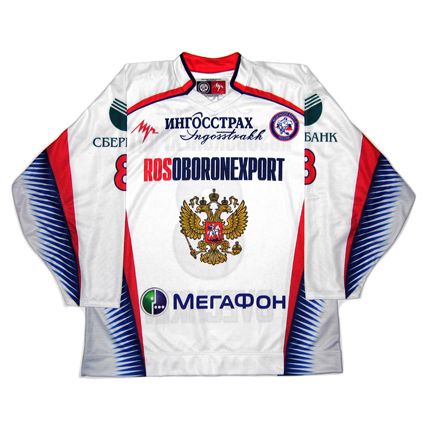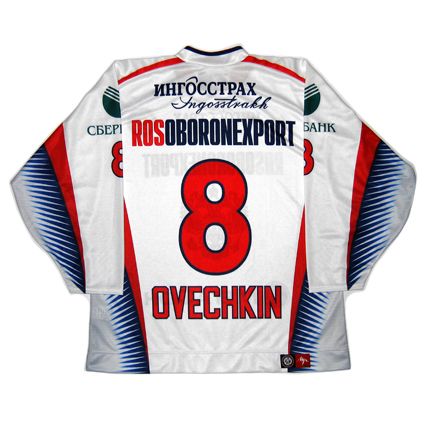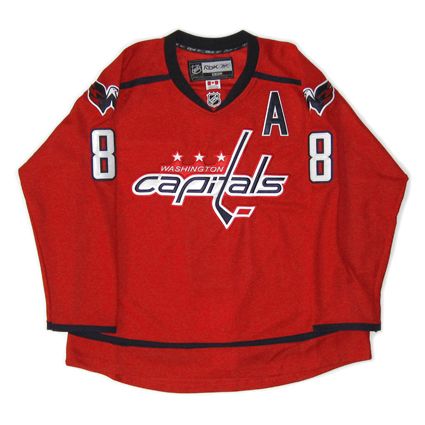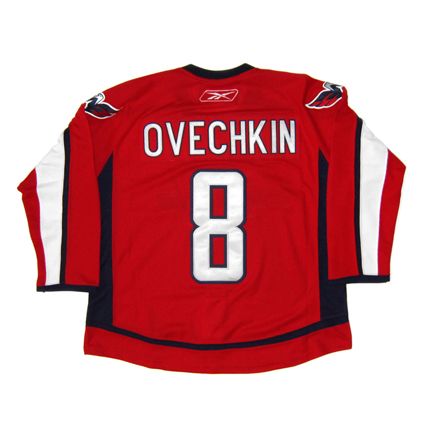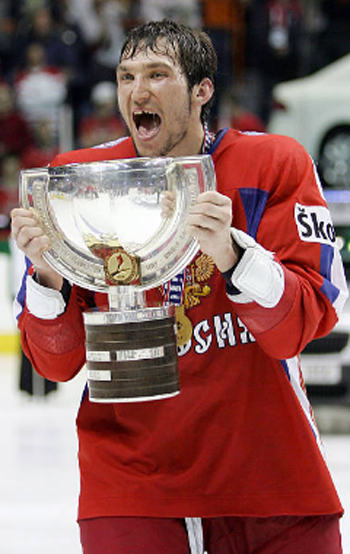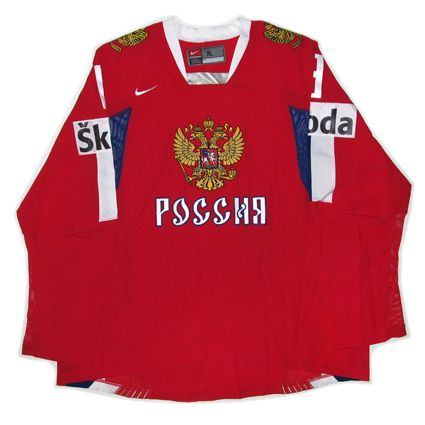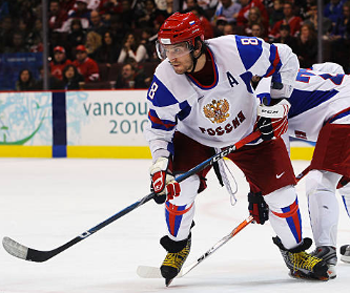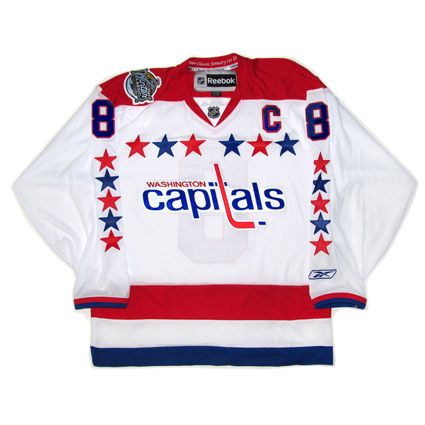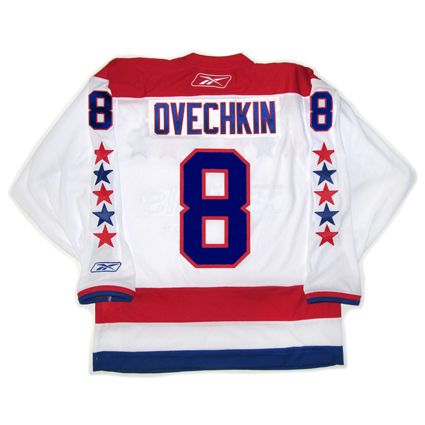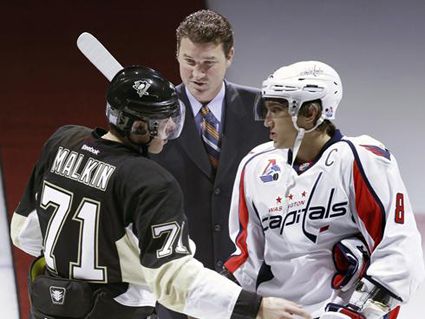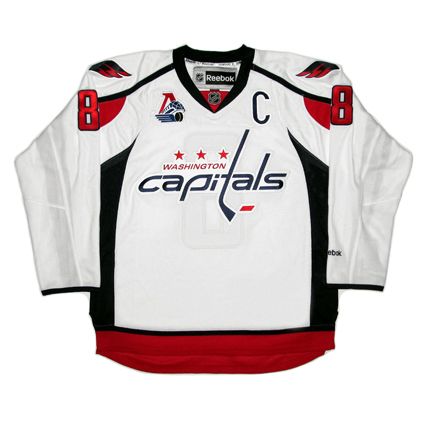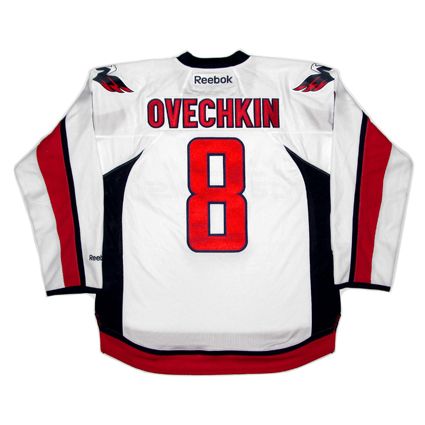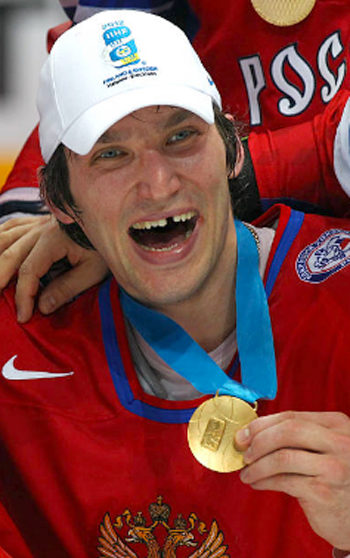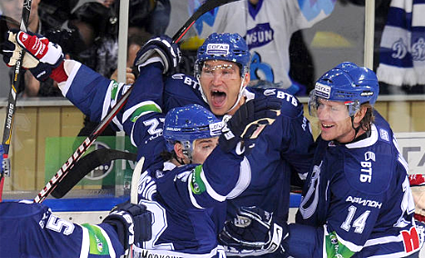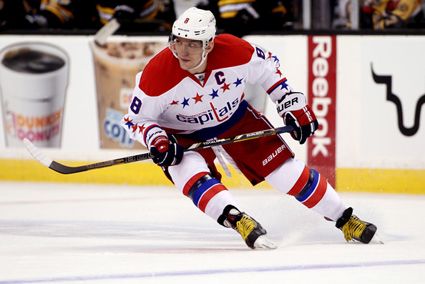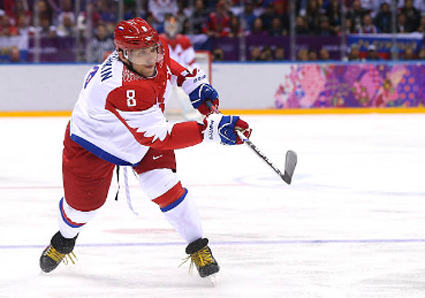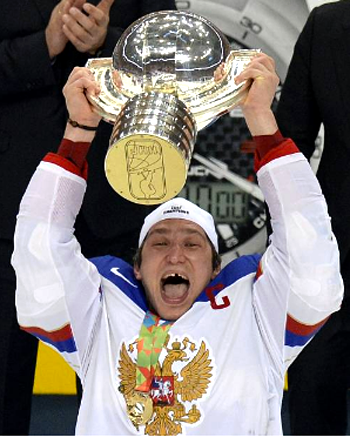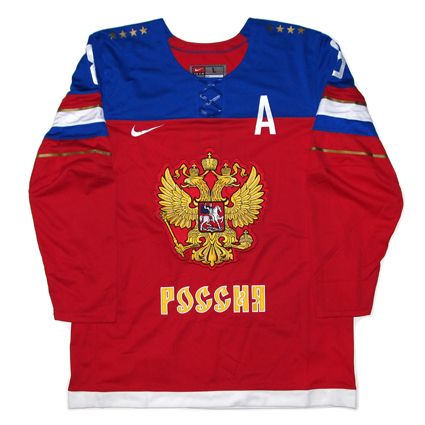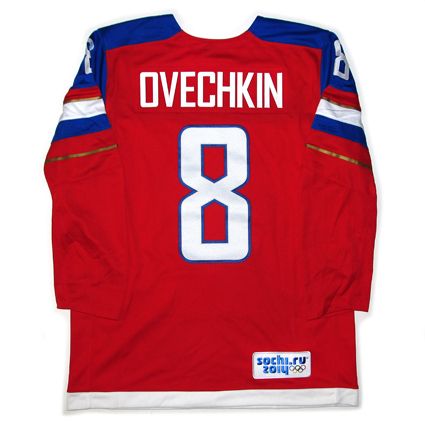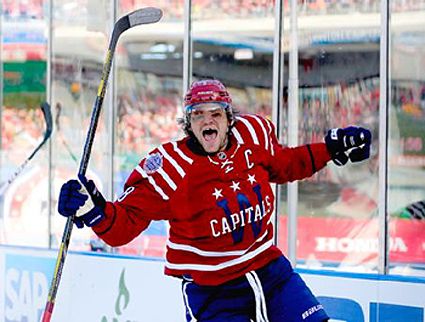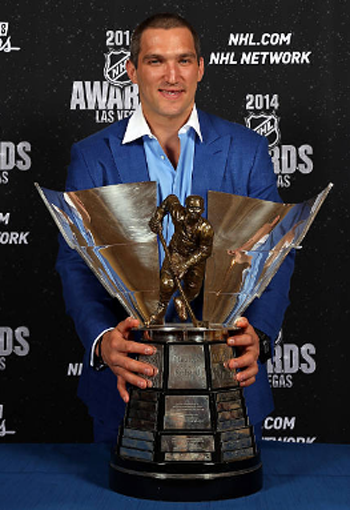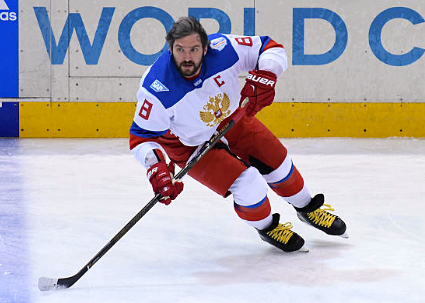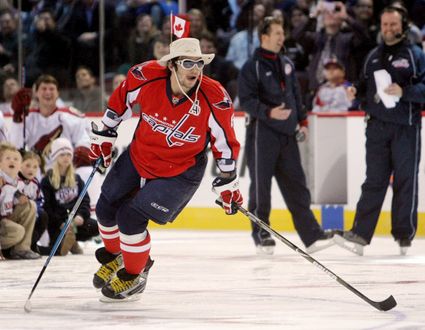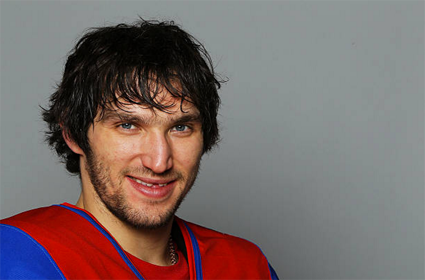Saturday, May 13, 2017
1920-21 Toronto St. Patricks Babe Dye Jersey
Born on this date in 1898, Cecil "Babe" Dye played junior hockey from 1916 to 1918 before playing senior hockey for the Toronto St. Patricks in 1918-19 before turning professional with the Toronto St. Patricks of the NHL the following season. His rookie campaign saw him score 11 goals and 14 points in 23 games.
His game really took off the following season when he led the league in goal scoring with 33 goals in 23 games for the St. Patricks and later gained his first playoff experience after the St. Patricks qualified for the post season after winning the season's second half schedule.
The 1921-22 season saw Dye finish second in goal scoring with 31, highlighted by his five goal night on December 16, 1922. He was just the seventh different player to ever accomplish that feat. In the post-season, Dye was instrumental in leading the St. Patricks first past the Ottawa Senators to win the O'Brien Trophy as NHL playoff champions and then over the Vancouver Millionaires of the PCHA 3 games to 2 to capture the 1922 Stanley Cup as he registered 11 of the St. Patricks 21 goals in 7 playoff games that season.
1921-22 Stanley Cup Champion Toronto St. Patricks
He returned to the St. Patricks the following season and led the league in both goals (26) and points (37) to capture his first Art Ross Trophy. Dye followed that by finishing second again in goal scoring in 1923-24 with 17 goals in 19 games.
Babe Dye in 1922-23 with Stanley Cup Champions patch
He rebounded from his 16 goal total the year prior, his lowest to date, with a strong 1924-25 season as he pushed his goal total to a career high 38 goals, as well as a career best 44 points, to capture not only the goal scoring title for the third time in five years, but also his second Art Ross Trophy as he was crowned scoring champion once more. On December 22 of that season he registered the second five goal game of his career, becoming on the third player to accomplish the feat more than once. His 38 goals would stand as the franchise record for 35 years until it was broken by Frank Mahovlich in 1960-61 in a season forty games longer.
Dye's last season in Toronto saw him second in team scoring and his 18 goals were good for eighth place league wide.
Prior to the 1926-27 season Dye was sold to the expansion Chicago Black Hawks, where his 25 goals would come in second overall in goal scoring for the third time of his career. His 30 points placed him fifth in the league scoring race. Additionally, his 25th and final goal of the season was the 200th of his NHL career.
Unfortunately, just prior to the 1927-28 season, Dye would break his leg during training camp and was never the same player again. He would return in time to play ten games for the Black Hawks later that season, but would not register a single point.
The Black Hawks then sold Dye to the New York Americans for the 1928-29 season and he played in 42 games, only scoring but a single goal. Just prior to the 1929-30 season Dye was traded the New Haven Eagles of the Canadian-American Hockey League. There, he regained some of his former scoring touch with 11 goals and 15 points in 34 games.
Dye signed with his former Toronto club, now renamed the Maple Leafs, in 1930 and played in six games before being released by the club.
His final NHL totals show 201 goals and 47 assists for 248 points in 271 games played, two scoring titles and one Stanley Cup.
Dye also played professional baseball in the summers from 1920 to 1926, even announcing his intention to retire from hockey to concentrate on baseball at one point prior to the 1923 hockey season, but rejoined the St. Patricks when the seasons began. It was his love of baseball that earned him his nickname "Babe", after the legendary Babe Ruth.
Dye was inducted into the Hockey Hall of Fame in 1970.
Today's featured jersey is a 1920-21 Toronto St. Patricks Cecil "Babe" Dye 1920-21 jersey. This style was worn for one season only, the year Dye won his first Art Ross Trophy as league scoring champion.
While the club was named the St. Patricks for only eight seasons, they did manage to wear five different sweater styles, including one of them twice and none of them longer than three seasons, that being the style pictured above with the Stanley Cup Champions patch.
Labels:
Dye Babe,
Toronto St. Patricks
Friday, May 12, 2017
1985-86 Washington Capitals Dave Christian Jersey
Born into a legendary American hockey family on this date in 1959, Dave Christian, son and nephew of 1960 Olympic gold medalists and founders of the Christian Brothers hockey stick company Bill and Roger Christian, as well as nephew of 1956 Olympic silver medalist Gordon Christian, played his youth hockey for Warroad High School followed by college hockey at the University of North Dakota in 1977-78 and 1978-79.
Today's video section is an interview with Christian talking about his memories of the 1980 Miracle on Ice.
He first donned a United States National Team sweater for the 1979 World Junior Tournament and was then a member of the United States National Team for the schedule of games they would play in 1979 in preparation for the 1980 Olympics in Lake Placid, New York. Coached by Herb Brooks, Christian and the rest of the 1980 United States Olympic Hockey Team would pull off the upset of the century, as the team of college age players would defeat the mighty Soviet Union National Team in "The Miracle on Ice" and go on to defeat Finland to capture the gold medal, adding to the family legacy of Olympic gold.
Following the Olympics, Christian turned professional with the Winnipeg Jets, who selected him in the second round of the 1979 NHL Entry Draft, the Jets first draft as a new member of the NHL after being founded in the WHA. He played 15 games with the Jets that season, scoring 18 points in 15 games which included his first goal on his first shot of his first shift, just seven seconds into his NHL career!
Playing his first full season with the Jets, Christian proved himself right at home in the NHL, scoring 28 goals and 71 points to lead the team in scoring while playing in all 80 of the Jets games, setting the tone for a career noted for his dependability as well as his durability.
At the conclusion of the season Christian played for the United States once again, this time at the 1981 World Championships where he had a great tournament, scoring 8 goals and 11 points in 8 games. Before the next NHL season began, his country came calling once again, this time for the 1981 Canada Cup.
His second season with Winnipeg saw his point total increase to 76. His last season with the Jets was cut short by 25 games due to torn shoulder muscles, but over the course of the next nine seasons he would miss just 10 total games.
His rights were traded to the Washington Capitals in June of 1983. He made the transition to the Capitals with ease, scoring a point per game with 81 points in 80 games, which began a streak of three consecutive seasons without missing a game.
Before the 1984-85 NHL season, Christian added to his international resume by competing in his second Canada Cup for the United States. After a 69 point season in 1984-95, he had the best offensive season of his career when he scored 41 goals and 83 points to lead the club in scoring.
He would play three more seasons with the Capitals, extending his 20 goal, 50 point streak to six, as well as fitting in another World Championship appearance for the US in 1989, contributing 7 points in 6 games.
After 28 games of the 1989-90 season, Christian was acquired by the Boston Bruins for his offensive skills and veteran leadership. The move paid off for both sides as Christian and the Bruins made the longest postseason run of his career as Boston made it all the way to the Stanley Cup Finals.
He played one more season with the Bruins before being transferred to the St. Louis Blues as compensation for a pair of free agent signings by the Bruins of former Blues players. Prior to joining the Blues, Christian had the honor of competing for the United States in his third Canada Cup, this one in 1991.
After one season with the Blues, Christian was claimed by the Chicago Blackhawks in the 1992 waiver draft. He played 60 games for Chicago in 1992-93 and 9 at the start of the 1993-94 season before being assigned to the Indianapolis Ice of the IHL for 40 games.
His final two seasons of pro hockey were spent with the brand new Minnesota Moose of the IHL, scoring 38 goals and 80 points in 81 games in 1994-95 and 46 points in 69 games of the 1995-96 season before retiring.
He finished his NHL career with 1,009 games played, 340 goals and 433 assists for 773 points and an appearance in the 1991 NHL All-Star Game to go along with his gold medal won in 1980.
Today's featured jersey is a 1985-86 Washington Capitals Dave Christian jersey as worn during this finest NHL season when he set a career high with 83 points to lead the Capitals in scoring.
While many may assume the Capitals jerseys remained the same during this era, there were subtle detail changes, which included adding names to the back of the red road jerseys in 1977, changing to single color names beginning in 1979-80, dropping the number of stars on the arms to just four for 1983-84 and 1984-85, adding the fifth star on the arms back in 1985-86 and making the names two colors again in 1987-88 through the end of the lifespan of this classic jersey style until it was replaced with an entirely new set of jerseys, which sported an entirely new identity package consisting of a new logo and all new team colors in 1995-96.
Bonus jersey: Today's bonus jersey is a 1980 United States Olympic Team Dave Christian jersey as worn in the gold medal clinching game against Finland on the final day of the 1980 Olympic tournament, the sixth time the United States had come from behind during their seven games.
The blue jerseys are the lesser known jerseys from the tournament, as it was the white ones they were wearing when they defeated the Soviet Union and the style which has been much more heavily marketed since then.
Extra bonus jersey: Today's extra bonus jersey is a 1994-95 Minnesota Moose Dave Christian jersey. This Starter brand jersey features the IHL 50th Anniversary patch, worn by all the teams in the IHL that season. It might be difficult to make out, but the letters and numbers are three color, white trimmed in forest green and outlined in purple, a frankly impossible combination to see against the black background and probably only visible from the front row of the seats, and even then only when someone was plastered up against the glass!
Even on the white jerseys, where they used purple numbers trimmed in forest green and outlined in black the similar values of the green and purple blended together for the most part. A very odd choice to be certain.
Today's video section is an interview with Christian talking about his memories of the 1980 Miracle on Ice.
Labels:
Christian Dave,
Minnesota Moose,
USA,
Washington Capitals
Thursday, May 11, 2017
1943-44 New York Rangers Dutch Hiller Jersey
Born on this date in 1915, Wilbert "Dutch" Hiller played junior hockey with the Sudbury Wolves in 1933-34 and 1934-35. After playing senior hockey with both the Sudbury Miners and the cleverly named Falconbridge Falcons during the Allan Cup playoffs in 1935-36, he took the most unusual route of playing a season of hockey in England with the Harringay Greyhounds.
It was an important step for him on his way to the NHL, as it was by far the most games he had ever played in a season up to that point with 42, during which he scored 22 goals and 33 assists.
He returned to North America for the 1937-38 season to play primarily with the New York Rovers of the Eastern Hockey League. He played well enough with the Rovers, 26 goals and 56 points in 43 games, that he earned a call up to the New York Rangers to make his NHL debut. In eight games he scored his first NHL point with an assist, and also saw action in one playoff game.
Beginning in 1938-39, Hiller, was a member of the "Roughneck" line playing along side of Phil Watson and Bryan Hextall. The Rangers public relations department wasn't fond of someone named Wilbert being a "Roughneck" and from that point on he became known as "Dutch" Hiller based on the Dutch population of his hometown of Berlin, Ontario, since renamed Kitchener after World War I, despite the fact he was not Dutch at all!
His first full season saw him finish with ten goals and 29 points, which increased to 13 goals and 31 points in 1939-40 as he developed a reputation for being one of the quickest players in the league. During the postseason, the Rangers defeated the Boston Bruins in six games before knocking off the Toronto Maple Leafs in six games, with Hiller assisting on the cup winning goal by Hextall, to capture the Stanley Cup.
The 1940 Stanley Cup Champion New York Rangers
After one more season with the Rangers, Hiller was claimed off of waivers by the Detroit Red Wings for the 1941-42 season. After only seven games, he was traded to the Boston Bruins for the rest of the year.
The same pattern repeated itself the next season as well, as Boston dealt Hiller to the Montreal Canadiens after just three games of the 1942-43 campaign. He found himself back with the Rangers for the 1943-44 season when he was loaned to New York, along with three other players, in exchange for the loan of Watson to the Canadiens.
Back on familiar territory with the Rangers, Hiller set a career high with 40 points from 18 goals and 22 assists in 50 games. Back with Montreal for the 1944-45 season, he had the only 20 goal season of his career on his way to a 36 point season.
While his production dropped in 1945-46, totaling just 18 points, he contributed six points in nine games in the postseason to get his name on the Stanley Cup for the second time in his career as Montreal defeated the Chicago Black Hawks followed by the Bruins.
The Stanley Cup Champion 1945-46 Montreal Canadiens
Hiller was then traded once more, this time to Toronto, who placed Hiller with their AHL club the Pittsburgh Hornets for the 1946-47 season. There he had a good season, scoring 29 points in 64 games and made it to the Calder Cup Finals.
His final season of hockey was spent with the Kitchener Dutchmen playing senior hockey in the Ontario Hockey Association as his eyesight was beginning to fail.
His final NHL totals were 383 games played over nine seasons, 91 goals and 113 assists for 204 points and a pair of Stanley Cup championships.
During 2005, thanks to the NHL lockout, a special program took place where champions of the past were granted a day with the Stanley Cup, a tradition that began long after their playing days had ended. Hiller was one of the lucky men to be granted their day with the cup, some 65 years after having won it for the first time.
From the Hockey Hall of Fame website's "Stanley Cup Journal":
During his NHL career, Dutch Hiller was a member of four clubs — the New York Rangers, Detroit Red Wings, Boston Bruins and the Montreal Canadiens. As a result, he became a de facto member of the exclusive club comprised of Stanley Cup champions, winning with New York in 1939-40 and Montreal in 1945-46. But the club in which Dutch Hiller is most active is the ROMEO Club - Retired Old Men Eating Out. Virtually every morning for the past seven years, a group of approximately 10 gentlemen meet at the local Burger King in La Crescenta, California. There, over coffee, the guys solve the world's troubles and talk about other important topics — like health, women…and hockey.
At 7:15 on the morning of Friday, September 9, the ROMEO Club convened at the Burger King as usual but this time, Dutch brought along a friend — the Stanley Cup!
Sporting a Rangers' ballcap, Dutch had to gulp his coffee between autographs, while his fellow club members pored over scrapbooks Hiller compiled during his career. "I thought people had forgotten me," admitted the 90-year-old champion. "It's unbelievable!" Astonished patrons picking up a coffee and Croissan'wich strained their necks when they realized that the Stanley Cup was in their midst.
At 11 o'clock, as the breakfast crowd had all but evaporated, the Stanley Cup was taken to Dutch's home in nearby Montrose, which borders Glendale to the south and west. There, daughters Pat and Rosemarie hosted as family and friends dropped by to visit Dutch and the Stanley Cup. Hiller regaled his friends and grandchildren with stories about being a goal judge for the Los Angeles Kings during their early years.
"What brought you to L.A., Dutch?" asked a friend. "Well, after we won the Cup with the Canadiens in '46, I got traded to Toronto and played with Pittsburgh (the Leafs' AHL affiliate). Then, I went home for a year (and played with the senior Kitchener Dutchmen in 1947-48). I got a call to coach the Los Angeles Monarchs (of the Pacific Coast Hockey League) in '48-49 and '49-50. We finished in second that last year." Dutch shrugs. "I loved the area and stayed here after that."
Reviewing the scrapbooks and being asked for autographs did Dutch Hiller a world of good. "It's good to be near the Cup again," he admits with a grin.
Hiller passed away just two months after his day with the cup at the age of 90.
Today's featured jersey is a 1943-44 New York Rangers Dutch Hiller jersey. The Rangers used block letters with no serifs or drop shadows from their inception in 1926 through the 1940-41 season. They then changed to the font still in use today with the italicized and serifed letters in 1941-42, adding the now familiar drop shadow the following season, by which time Hiller had moved on.
He did return to the Rangers for the 1943-44 season, during which he wore today's featured jersey style.
Labels:
Hiller Dutch,
New York Rangers
Wednesday, May 10, 2017
1982-83 Calgary Flames Tim Harrer Jersey
Tim Harrer, born on this date in 1957, played high school hockey at Bloomington Lincoln High School in Minnesota and was named an All-State player as a junior. That attracted the attention of the coach of the University of Minnesota, Herb Brooks, who offered Harrer a scholarship for the 1976-77 season to join the defending national champion Golden Gophers.
"Our practices lated forever. The more you practice and the more you play with better players, the quicker you improve," Harrer recalled. "If you're not competitive, you just get weeded out."
He earned the Gophers Rookie of the Year award after playing in 38 games and scoring 14 goals and 23 points as a freshman. His potential did not go unnoticed and Harrer was drafted by the Atlanta Flames in the 1977 NHL Amateru Draft, as well as being selected by the Calgary Cowboys in the 1977 WHA Amateur Draft.
He returned to Minnesota for a second season, nearly doubling his point total with 22 goals and 43 points in 1977-78, good for second on the team. The following season Harrer took another leap forward with 28 goals and 53 points, a season capped off with a 4-3 win over North Dakota in the NCAA National Championship Final, giving Minnesota the championship in Brooks final game as their head coach.
While Brooks was off to lead the United States Olympic team for the upcoming Winter Olympics in Lake Placid, Harrer was now a senior at Minnesota.
For the 1979-80 season, he absolutely caught fire, setting a team record which still stands today, 32 years later, when he scored 53 goals in 41 games. Additionally, he added 29 assists for 82 points to lead Minnesota in scoring. His 53 goals ranks as the fifth highest in NCAA history and earned him the WCHA's Most Valuable Player Award and All-America First Team recognition, which earned him a place on one of the Gophers' Mariucci Arena murals.
Also during 1979, Harrer was famously brought in by Brooks to compete with the United States Olympic Team during the latter stages of their preparation for the Games, either to replace a struggling Mike Eruzione or perhaps just to light a fire under his team. Wither way, the move had a desirable effect, as it brought the players who had gone through all of Brooks' intense training and practices closer together, and Eruzione stayed at Harrer's expense after his four games with the Olympic team, which included a goal and 4 points.
From the book The Boys of Winter: The Untold Story of a Coach, a Dream, and the 1980 U.S. Olympic Hockey Team:
Brooks kept searching, and when Eruzione hit his drought, he found a willing pair of freshman forwards: Tim Harrer and Aaron Broten from the U. Brooks had recruited both of them, and both were players with speed and skill and explosive scoring ability. Brooks's plan was to tell the press that Eruzione had injured his back, then make his erstwhile captain an assistant coach; that way he could still be in Lake Placid and contribute to the team. When the coach laid out this scenario to Eruzione, the captain was aghast. Making the Olympic team meant everything to him. In the fall, he had fractured his wrist one day in a collision with Eric Strobel, then fainted in the van as trainer Gary Smith drove him to the hospital for X-rays, not so much from the pain of the fracture as from the prospect of it costing him his roster spot. Now he was on the brink again, and for once this was no Brooksian mind game. In a hotel lobby in St. Paul, before a team dinner in late January, Brooks had a private conversation with Gus Hendrickson, his friend and the coach of Minnesota-Duluth."I'm going to cut Eruzione. He's just not very good," Brooks said. "I think I'm going to go with Tim Harrer.""But Eruzione's your leader. You need a leader," Hendrickson said. "Herbie, don't start screwing things up now." It was exactly the sentiment of the team. They'd been through Brooks's boot-camp grind for six months. Eruzione had become a widely admired captain, an emotional linchpin."If he cuts Eruzione, we're not going to go," John Harrington told Hendrickson, his former coach.The players on the team were furious when Harrer and Broten arrived -- even the Gopher guys who knew and liked them. "Great to see you, Tim," [Steve] Janaszak said to Harrer. "When's your flight back?" Not even three weeks before Opening Ceremonies, the team confronted Brooks about his revolving door and had a four-letter suggestion for him: stop. It wasn't fair to bring in guys so late, to send guys packing who had been making sacrifices for months. Of course the imports might stand out during their audition; they hadn't spent months getting beaten up by Central Hockey League thugs looking to make a name for themselves by working over an Olympic kid. Led by Eruzione and O'Callahan, the players told Brooks that they were a family and that the team needed to come from the guys in the room right there. Brooks for once backed off.
“I think Herb just made a decision that it wasn’t right [to keep me]. He just wanted to keep the team together. It wasn’t really fair to all of a sudden bring me in out of the blue and send somebody home that’s been with the team all year,” Harrer said.
Following the completion of his college career, Harrer joined the Birmingham Bulls of the Central Hockey League for 2 regular season games as well as 4 playoff games.
For the 1980-81 season, Harrer split time between Birmingham (28 games) and the Hershey Bears of the AHL (39 games). He next joined the Oklahoma City Stars of the CHL for the 1981-82 season, netting 29 goals and 56 points for third on the club.
His next stop was with the Colorado Flames of the CHL, where he impressed with 33 goals and 62 points, which earned him a call up by the Calgary Flames of the NHL, who had relocated from Atlanta in 1980. His time with Calgary was brief, just three games without a point before being returned to Colorado.
Harrer had his finest season as a professional in 1983-84 when he skated for the Salt Lake Golden Eagles, also of the CHL. There, he scored 42 goals, one off the team lead, and 27 assists for 69 points in 66 games.
His final season as a professional saw Harrer play 7 games for the Nova Scotia Oilers of the AHL, 28 games for the IHL's Toledo Goaldiggers and 4 games for ATSE Graz in Austria, scoring three goals.
In 2001, Harrer was named one of the 50 greatest players in University of Minnesota hockey history.
Today's featured jersey is a 1982-83 Calgary Flames Tim Harrer jersey, worn during his brief stint in the NHL with the Flames. The Flames kept the same sweater style used in Atlanta, only with the "A" crest changed to a "C". These jerseys would remain in use from 1980-81 to 1994-95.
Bonus jersey: Today's Bonus jersey is a 1980 United States Olympic Team Tim Harrer jersey as worn by Harrer during his brief stint with the Olympic Team during their pre-Olympic schedule of games. While Harrer was not named to the final Olympic Team roster, his time with the club was well documented in the feature film "Miracle" as the point when the team bonded together as one.
Note how the 1 appears to be a different size than the 2 on the back, suggesting this jersey was recycled from a previous number worn by a different player.
Photo courtesy of Classic Auctions
Bonus jersey: Today's Bonus jersey is a 1980 United States Olympic Team Tim Harrer jersey as worn by Harrer during his brief stint with the Olympic Team during their pre-Olympic schedule of games. While Harrer was not named to the final Olympic Team roster, his time with the club was well documented in the feature film "Miracle" as the point when the team bonded together as one.
This jersey is one of the final set of jerseys made of use in the Olympics, as the pre-Olympic jerseys had USA diagonally down the front rather than arched across the chest like today's featured jersey.
Here is the scene from "Miracle" where the players confront Brooks about bringing in Harrer late in the process, which would be at the expense of one of the existing team members who has gone through the rigors of training under Brooks for months, at the risk of upsetting team chemistry.
Labels:
Calgary Flames,
Harrer Tim,
USA
Tuesday, May 9, 2017
Third String Goalie Eighth Anniversary - Alexander Ovechkin
Today is the eight anniversary of Third String Goalie. To date we have made 2465 posts, are followed by 77 people here on blogger, by 337 on our Facebook page, and 1,444 of the most intelligent people on Twitter.
Today's fourth featured jersey is a 2005-06 Washington Capitals Alexander Ovechkin jersey as worn during just the first period of his NHL debut when all players worn the NHL Cares/Katrina patch. The game worn jerseys were then auctioned off to raise funds for the Hurricane Katrina Relief Fund with Ovechkin's selling for $6,710.
After changing away from their original red, white and blue jerseys, the Capitals introduced an entirely new look for the 1995-96 season with new logos and a new blue, copper and black color palatte. Two seasons later they would debut a new black alternate jersey for the 1997-98 season, which was then promoted to their primary road jersey in 2000-01. It would remain in use through the 2006-07 season.
Ovechkin has also participated in games of the Euro Hockey Tour, a competition open to Russia, Finland, Sweden and the Czech Republic that is used as preparation for the upcoming World Championships or Olympics. Each country hosts a tournament during during the season in which each team plays three games for a total of 12 games per team. The winning nation is then determined by the points gained in each tournament.
Ovechkin appeared in the Euro Hockey Tour prior to coming to the NHL in 2003-04, 2004-05 and 2005-06 and two more times as his schedule has allowed, such as the 2012-13 season when the NHL season was delayed by labor problems. Sometimes it is for as little as one game, and never more than eight.
Today's eighth featured jersey is a 2010-11 Washington Capitals Alexander Ovechkin 2011 NHL Winter Classic jersey, as worn when the Capitals met the Penguins outdoors.
The Capitals would then make this throwback jersey their new alternate jersey for the next four seasons until replacing it with the red version of the same style for the 2015-16 season.
Malkin and Ovechkin greet each other following Mario Lemieux
presiding over the ceremonial opening faceoff on October 11th
We've written about jerseys from Alaska across North America, Europe and Asia to Japan and from Finland down to South Africa, including jerseys from the United States, Canada, Iceland, Great Britain, France, the Netherlands, Germany, Norway, Denmark, Sweden, Finland, Switzerland, Italy, Slovenia, the Czech Republic, Croatia, Austria, Greece, Slovakia, Hungary, Yugoslavia, South Africa, Poland, Latvia, Belarus, Ukraine, Russia, Kazakhstan, China and Japan.
In addition to the countries we've written about, we've also had visitors from 210 different countries and territories, which still shocks us to no end, often wondering what someone from someplace like Malawi or Iran was expecting to find when they arrived here?
We've written about the oldest hockey sweater in existence, brand new releases and sweaters never actually used. we've covered jerseys we love and those we do not.
We've also gone astray a time or two with unexpected stories we felt worth sharing and we sincerely hope you've enjoyed the ride.
As a small token of our appreciation for your readership, all readers who email us their mailing address within the next week will receive a Third String Goalie refrigerator magnet for free!
Click the image below for The Third String Goalie Online Shop

Third String Goalie Branded Goods proudly featuring
the Patron Saint of Goaltenders Georges Vezina.
********
Also, we are pleased to announce we are having an Anniversary Sale in the Third String Goalie Online Shop Sale!
Prices have never been lower and we have t-shirts, polos, sweatshirts, hoodies, jackets, clothing for kids, tote bags, home and office, mugs and even buttons all featuring our vintage Third String Goalie logo.

In honor of our 8th anniversary, we have chosen to feature one of our favorite players to have worn the number 8.
********
Born on September 17, 1985, Alexander Ovechkin was born into an athletic family, as his mother Tatyana Ovechkina won two Olympic gold medal in women's basketball at the 1976 and 1980 Olympics. When he was just two years old, he grabbed a hockey stick in a toy store and refused to let go, giving his parents an early sign of what was to come. He would also drop all his toys and come running if a hockey game ever appeared on the family TV, protesting if the channel were ever to be changed.
He enrolled in hockey school at the age of eight and by 16, he was playing for Dynamo Moscow in the Russian Superleague. In the 2001-02 season, Ovechkin gave little insight for what was to come by scoring just 2 goals and 2 assists in 22 games played. However, playing among his peers was an entirely different story, as he utterly dominated the 2002 World U18 Junior Championships with a tournament leading 14 goals and 18 points in 8 games played as Russia finished with the silver medal, the first of many international medals for the tremendously proud Russian.
In 40 games with Dynamo in 2002-03, he scored 8 goals and 15 points. Additionally, he played in both the U18 World Juniors (9 goals, 13 points, bronze medal) and made his IIHF U20 World Junior Championships debut at age 17, impressing with 6 goals and an assist in 6 games as the Russians defeated the host Canadians for his first gold medal. Ovechkin led both tournaments with the most goals scored.
His confidence continued to grow with Dynamo playing with players still much older than the 18 year old, and in 2003-04, he scored 13 goals and 24 points in 53 games. He also had a very busy international season, playing in the Euro Hockey Tour (6 points in 8 games), the World Juniors (5 goals and 7 points in 6 games) and made his senior level debut at the World Championships, scoring a goal and an assist in 6 games.
Following the season, Ovechkin was drafted first overall by the Washington Capitals in the 2004 NHL Entry Draft, thanks to the Capitals moving up from third to first in the NHL Draft Lottery, passing both the Chicago Blackhawks and Pittsburgh Penguins. Ovechkin had been projected as the first overall pick for two years prior to the 2004 draft. In fact, the Florida Panthers attempted to select Ovechkin during the 2003 NHL Entry Draft, despite the fact he was born two days late to be eligible for that year's draft, but the Panthers unsuccessfully claimed that because of the number of Leap Days he had lived, he should have been eligible!
The public was now anxious to see this projected star in action now that he had been drafted, and their first opportunity came later that fall when Ovechkin played in 2 games of the 2004 World Cup of Hockey, scoring once while still just 18 years old.
His NHL debut would have to wait, however, as the 2004-05 NHL season was cancelled due to the NHL lockout, ensuring that Ovechkin would return to Dynamo for a fourth season. In 37 games, he scored 13 goals and 26 points while being limited to 37 games.
********
Today's first featured jersey is a 2004-05 Dynamo Moscow Alexander Ovechkin jersey worn during his final season of play in Russia before coming to the NHL. Dynamo would win the 2005 Russian Superleague title that season. If it were not for the NHL lockout which cancelled the 2004-05 NHL season, Ovechkin would have most assuredly been in the NHL that season.
Dynamo would only wear this style one season, as would change jersey styles every season during that time period.
Dynamo would only wear this style one season, as would change jersey styles every season during that time period.
********
The reason for his curtailed regular season with Dynamo was a shoulder injury suffered during the gold medal game of the 2005 World Juniors, a tournament billed as one of the finest World Juniors ever due to the presence of a number of players who would have ordinarily been playing in the NHL if the season had not been cancelled.
Sidney Crosby and Ovechkin squaring off at the stellar 2005 World Juniors
Note Ovechkin wearing a mirrored visor to hide his eyes from defenders
Ovechkin finished with 7 goals and 11 points in 6 games, third in tournament scoring behind Patrice Bergeron (who already had a full season of play in the NHL with the Boston Bruins) with 13 points and Ryan Getzlaf (12 points), robbed of a chance to add any more points to his total by his early exit in the championship game due to his shoulder injury.
Evgeni Malkin consoles a distraught Ovechkin following the Russian loss in the finals, a game where Ovechkin was knocked out early with an injury
********
Today's second featured jersey is a 2005 Russia National Team Alexander Ovechkin jersey worn during the 2005 World Junior Championships in Grand Forks, North Dakota. This style was first worn by Russia back in 2000 and continued to be worn through the 2005 World Junior Championships, which included a silver medal at the 2002 World Championships and gold medals at the 2002 and 2003 World Juniors while wearing this style.
********
Ovechkin was healed in time for the Superleague playoffs and contributed 2 goals and 6 points as Dynamo rolled through the bracket, winning 9 games and losing only 1 on their way to the 2005 RSL championship.
Dynamo Moscow celebrating their 2005 championship
After the conclusion of the domestic season, he suited up for Russia once again, this time at the World Championships in Austria, scoring 5 goals and 8 points in 8 games while earning a bronze medal as the Russian's leading scorer.
********
Today's third jersey is a 2005 Russia National Team Alexander Ovechkin jersey as worn during the 2005 World Championships when Russia won a bronze medal.
In 2005 Nike made highly effective and somewhat overdue updates to all the team's jerseys for the 2005 World Championships and then immediately dropped all of them for the 2006 Olympics when they introduced the new Nike Swift jerseys, giving this gorgeous style an all too short lifespan and making it an exceedingly rare style to find.
In 2005 Nike made highly effective and somewhat overdue updates to all the team's jerseys for the 2005 World Championships and then immediately dropped all of them for the 2006 Olympics when they introduced the new Nike Swift jerseys, giving this gorgeous style an all too short lifespan and making it an exceedingly rare style to find.
********
During the summer, Ovechkin signed a contract with the Capitals and, with the labor issues resolved just two days later, he made his NHL debut on October 5, 2005, introducing himself to the league with 2 goals against the Columbus Blue Jackets in a 3-2 Washington win.
His first hat trick game on January 13th and three days later he was all over the sports highlights for scoring a goal while sliding on his back while facing away from the net after being knocked down on a rush, a play that is now simply referred to as "The Goal".
Dainius Zubrus and Ovechkin just prior to the start of his first NHL game as
evidenced by the NHL Cares/Katrina patch worn during only the first period
evidenced by the NHL Cares/Katrina patch worn during only the first period
His first hat trick game on January 13th and three days later he was all over the sports highlights for scoring a goal while sliding on his back while facing away from the net after being knocked down on a rush, a play that is now simply referred to as "The Goal".
********
Today's fourth featured jersey is a 2005-06 Washington Capitals Alexander Ovechkin jersey as worn during just the first period of his NHL debut when all players worn the NHL Cares/Katrina patch. The game worn jerseys were then auctioned off to raise funds for the Hurricane Katrina Relief Fund with Ovechkin's selling for $6,710.
After changing away from their original red, white and blue jerseys, the Capitals introduced an entirely new look for the 1995-96 season with new logos and a new blue, copper and black color palatte. Two seasons later they would debut a new black alternate jersey for the 1997-98 season, which was then promoted to their primary road jersey in 2000-01. It would remain in use through the 2006-07 season.
********
He continued scoring at a furious rate, particularly as a rookie, and ended up third overall in goals and points with 52 goals and 106 points, all of which earned him the Calder Trophy as the NHL Rookie of the Year. His 106 points were 49 more than teammate Dainius Zubrus' 57!
During the NHL season, Ovechkin made his Olympic debut as a member of the Russian team at the 2006 Games in Torino, Italy. In 8 games, he scored 5 times. With Washington failing to make the playoffs, he was able to play for Russia once again, this time at the World Championships in Latvia, scoring 6 goals and 9 points in 7 games to lead the team in scoring.
For the 2006-07, the dynamic fan favorite was named as one of the Capitals assistant captains at the age of 20. He again led the Capitals in scoring thanks to 46 goals and an equal 46 assists. His 92 points were 19 more than fellow countryman Alexander Semin. He also played in his first NHL All-Star Game that season, scoring one goal. With the Capitals out of the playoffs, Ovechkin returned to Russia for the 2007 World Championships, but a 2-1 loss in Finland in the Semifinals limited the host Russians to the bronze medal, Ovechkin's second at the World Championships.
Ovechkin has also participated in games of the Euro Hockey Tour, a competition open to Russia, Finland, Sweden and the Czech Republic that is used as preparation for the upcoming World Championships or Olympics. Each country hosts a tournament during during the season in which each team plays three games for a total of 12 games per team. The winning nation is then determined by the points gained in each tournament.
Ovechkin appeared in the Euro Hockey Tour prior to coming to the NHL in 2003-04, 2004-05 and 2005-06 and two more times as his schedule has allowed, such as the 2012-13 season when the NHL season was delayed by labor problems. Sometimes it is for as little as one game, and never more than eight.
Ovechkin during the 2012 Euro Hockey Tour
********
Today's fifth featured jersey is a 2007-08 Russia National Team Alexander Ovechkin jersey as worn during the Euro Hockey Tour. The jerseys worn during the Euro Hockey Tour often differ from those worn during IIHF tournaments and can be counted on to have many sponsorship logos throughout.
********
Ovechkin terrorized goaltenders league wide during the 2007-08 NHL season, scoring 65 times to win the Rocket Richard Trophy as the NHL's leading goal scorer. His final point total of 112, thanks to 47 assists, earned him the Art Ross Trophy as the leading point getter. His trophy case was also enriched with both the Hart Trophy as the league's Most Valuable Player as voted by the hockey writers and the Pearson Award for being voted Most Outstanding Player by the players union. He was the first player to ever win all four trophies in one season since the Richard Trophy was instituted in 1999. Additionally, he was named the recipient of the Kharlamov Trophy as the best Russian NHLer for the third season in a row as voted by fellow Russians in the NHL. He also appeared in his second NHL All-Star Game, scoring twice.
Today's sixth featured jersey is a 2007-08 Washington Capitals Alexander Ovechkin jersey as worn during the season when Ovechkin led the NHL in goals and points and was named the league's Most Valuable Player and Most Outstanding Player as well as the Best Russian in the NHL.
2007-08 was the first season for the new Capitals Reebok Edge jersey which remains in use now ten seasons later. Ovechkin wore this style for two and a half seasons with the assistant captain's A before being named team captain during the 2009-10 season.
********
2007-08 was the first season for the new Capitals Reebok Edge jersey which remains in use now ten seasons later. Ovechkin wore this style for two and a half seasons with the assistant captain's A before being named team captain during the 2009-10 season.
********
That season, the Capitals would return to the playoffs for the first time in four seasons, but lose in overtime of Game 7 in the first round. Washington's early exit from the playoffs would see Ovechkin make himself available to the Russian National Team for the World Championships in Canada, where he not only led the team in scoring with 6 goals and 12 points in 9 games, but assisted on Ilya Kovalchuk's overtime game winner to earn his first World Championship gold medal over host Canada.
Ovechkin holding the World Championship trophy for the first time
********
Today's seventh featured jersey is a 2008 Russia National Team Alexander Ovechkin jersey as worn during the 2008 World Championships when Russia won the first gold medal of Ovechkin's World Championship career.
This was the first Nike Swift style jersey for Russia and was worn starting at the 2006 Olympics through the 2008 World Championships.
This was the first Nike Swift style jersey for Russia and was worn starting at the 2006 Olympics through the 2008 World Championships.
********
The 2008-09 season again saw him win the Rocket Richard Trophy with a league leading 56 goals, only the second player to win the Richard Trophy in back-to-back seasons after Russian Pavel Bure. His 110 points were second in the league, just 3 back of the leader and fellow Russian Evgeni Malkin, who was drafted second behind Ovechkin in 2004. He would also win his second Hart Trophy and the Ted Lindsay Award, which was the new name for the Pearson Award. The Capitals were eliminated in the second round of the playoffs, but not until Ovechkin had scored 11 goals and 21 points in 14 games.
Ovechkin once again led the NHL in goals scored with 50, his third consecutive season with 50 goals or more and his third straight Rocket Richard Trophy. Ovechkin was named as the Capitals new captain on January 5, 2010 after the previous one had been traded away. A month later, on February 5th, he reached the 500 point mark, only the fifth player to reach that milestone in his fifth season, doing so in 373 games. He played in his third NHL All-Star Game that year, scoring once with a pair of assists. At the conclusion of the season, he became the first player voted as a First Team All-Star in each of his first five seasons and was voted the recipient of the Lindsay Award for the second time.
Also during the 2009-10 season, Ovechkin returned to the Olympics in Vancouver as an assistant captain of the Russian team, scoring 2 goals and 4 points in 4 games. Following the Capitals playoffs, he won a silver medal at the 2010 World Championships in Germany after coming up a goal short in the gold medal game. He would tie for second in goals with 5 in 9 games played.
He would lead the Capitals in scoring by 20 points with 32 goals and 85 points and score another 10 points in 9 playoff games in 2010-11. That season he also played in his fourth NHL All-Star Game, scoring a goal and an assist. With Washington eliminated in the second round of the NHL playoffs, he joined Russia at the 2010 Worlds in time to play in five games.
********
Today's eighth featured jersey is a 2010-11 Washington Capitals Alexander Ovechkin 2011 NHL Winter Classic jersey, as worn when the Capitals met the Penguins outdoors.
The Capitals would then make this throwback jersey their new alternate jersey for the next four seasons until replacing it with the red version of the same style for the 2015-16 season.
********
The 2011-12 season saw Ovechkin score 38 goals and 65 points with an additional 9 points in 14 playoff games.
On October 11, 2011, the Penguins and Capitals, led by the most prominent Russian stars in the NHL, Malkin and Ovechkin, combined in a joint effort to raise funds to benefit the families of the victims of the Yaroslavl Lokomotiv disaster, the tragic plane crash on September 7, 2011 which claimed the lives of the entire Lokomotiv roster of 26 players and 11 members of the team's coaches staff as they were on their way to their opening game of the season.
The desire to do honor the victims and support their survivors led to both teams wearing a Lokomotiv patch for their first meeting of the season, with the jerseys then signed and auctioned off following the game.
Malkin and Ovechkin greet each other following Mario Lemieux
presiding over the ceremonial opening faceoff on October 11th
"I think it's America showing respect, respecting the memories of the guys who were in the plane crash and for Russians, " Ovechkin said. "It means a lot. It's nice of both organizations and the NHL to do that."
********
Today's ninth featured jersey is a 2011-12 Washington Capitals Alexander Ovechkin "Lokomotiv" jersey, as worn in the Capitals game against the Penguins on October 11, 2011. Ovechkin would score his first goal of the season that night as Washington won in overtime.
Ovechkin's captain's jersey raised the most money in the charity auction following the game, selling for a high bid of $5501 with teammate and fellow Russian Semin reaching $3,124 next among the Capitals.
Washington debuted this style in the 2007-08 season when Reebok became the new supplier of jerseys to the NHL. This style remains in use today, ten seasons later.
********
With time the Playoff Round still remaining at the World Championships in Sweden, he made a dash to Europe to join Russia for their final three games, wins over Norway, Finland and Slovakia by a combined score of 17-6 to earn a second World Championship gold medal as Ovechkin scored 2 goals in 3 games as well as 2 assists in the gold medal game.
With the start of the 2012-13 season delayed by labor problems once again, Ovechkin returned to Russia to play for Dynamo Moscow. He was there for 31 games, with 19 goals and 40 points, enough to lead the team in scoring despite missing the final 21 games of the schedule!
When the NHL season finally began in January, Ovechkin returned to the Capitals and won his third Rocket Richard Trophy as he led the league in goals with 32 in 48 games. That season he was named the Hart Trophy winner as the league MVP for the third time. Oddly, Ovechkin was named as a First Team All-Star as a right wing, and as a Second Team All-Star as a left wing!
With the Capitals out of the playoffs after the first round, Ovechkin once again dashed back to Europe for a chance to help Russia at the World Championships, only to have Russia eliminated in the Quarterfinals of the Playoff Round in his only game of the tournament. He did have a goal and an assist on 2 of the 3 Russian goals that game.
The 2013-14 season saw him lead the NHL in goals for the second consecutive season with 51 goals, 8 more than his next closest pursuer. His final point total on the season was 79.
He once again pulled double duty for Russia, playing in his third Olympics, this one hosted by Russia in Sochi. As the team's assistant captain, Ovechkin had a goal and an assist in 5 games.
With the Capitals not making the NHL postseason, he was free for World Championship duty yet again. Serving as team captain at the Worlds for the first time, he had a fine tournament, scoring 4 goals and 11 points in 9 games, including scoring a goal in Russia's 5-2 win over Finland to earn him his third World Championship gold medal.
Ovechkin celebrates his third World Championship in 2014
********
Today's tenth featured jersey is a 2014 Russia National Team Alexander Ovechkin jersey as worn during the 2014 Olympics in Sochi, Russia. This style was first worn at the 2014 Olympics and remains in use today.
********
Ovechkin led the league in goals once more in 2014-15, this time with 53 goals, the third highest of his career on his way to 81 points. He also participated in his fifth NHL All-Star Game that season, recording 3 assists. On November 4th of that season, he recorded his 826th point to pass Peter Bondra to become the Capitals all-time leading in points. Later that season, he surpassed Bondra as the franchise's all time leader in goals scored.
With Russia still alive at the 2015 World Championships, Ovechkin arrived in the Czech Republic once the Capitals were out of the NHL playoffs. He arrived in time to score a goal and an assist in Russia's 4-0 Semifinal win over the United States but had to settle for silver after a loss to Canada in the gold medal game.
Ovechkin hit a number of milestones during the 2015-16 season. On November 19th, his 9th goal of the season gave him first place for most goals by a Russian in NHL history with 484. Later that season on January 10th, he reached the 500 goal plateau, just the 43rd player in league history reach that mark and the fifth fastest to do so and the first Russian. April 9th saw him score his 50th goal to become only the third player in NHL history to have seven 50 goal seasons in a career. He finished the season with 50 goals and 71 points, which brought to an end a ten season run of being the Capitals leading scorer, as he finished second to Evegeni Kuznetsov's 77 points. Still, his 50 goals gave him his fourth consecutive Rocket Richard Trophy and sixth overall as the NHL's leading goal scorer.
Ovechkin would lead Washington in playoff scoring with 5 goals and 12 points in 12 games, but playoff success would elude him once more as Washington was eliminated in the second round for the fifth time in his 11 seasons. As is his practice, he left directly for the World Championships, again hosted by Russia. He arrived for Russia's final three victories in the Preliminary Round and a Quarterfinal win over Germany. After a loss to Finland in the Semifinals, they defeated the United States 7-2 for the bronze.
Prior to the start of the 2016-17 season, Ovechkin played in four games with Russia serving as the team captain at the 2016 World Cup of Hockey, scoring a goal and 3 points, but were defeated in the Semifinals.
In the just completed 2016-17 regular season, scored 33 goals and 69 points for second on the team behind Swede Nicklas Backstrom. His 33 goals did lead the team, but his four year streak of leading the league in goals came to an end. On January 11th, he scored the 1,000th point of his career, with a goal 35 seconds into the game. He is the 84th player to reach 1,000 points and the 37th to do so with one team.
He is currently second with 1,035 career points, 144 behind Sergei Fedorov for the career lead among Russians, having passed Alexander Mogilny (1,032) and Alexei Kovalev (1,029) this season.
Ovechkin has proven time and time again to be an accessible fan favorite, interacting with the public in unexpected ways. He is so popular with Capitals fans that GQ magazine once named him the 48th most powerful person in Washington D. C.! His popularity league wide is enhanced when he displays a great sense of fun during events like skills competitions during all-star weekends, as he has won the Breakaway Challenge while employing humorous props while doing so.
He had particular fun during the All-Star Fantasy Drafts, tormenting last pick Phil Kessel in 2011 and lobbying to be the one picked last in 2015, motivated by wanting to be awarded a car in order to donate it to a charity only to be denied with just two picks remaining.
His fervor when it comes to playing for his home country is unsurpassed among NHLers, and he has publicly stated his intentions to play for Russia at the 2018 Olympics in South Korea whether the NHL takes a break from its season or not, putting him at odds with the league.
In today's video section, first is a profile of Ovechkin prior to the 2004 NHL Entry Draft in anticipation of his first overall selection.
Here is video of Ovechkin being selected first overall in the 2004 NHL Draft.
Next is Ovechkin's first NHL goal.
This amazing highlight reel is just from his rookie season!
Here, his sense of humor is on display in this ESPN commercial.
What other player warrants a Top 10 Off Ice Moments segment?
Labels:
Ovechkin Alexander,
Russia,
Washington Capitals
Subscribe to:
Comments (Atom)

